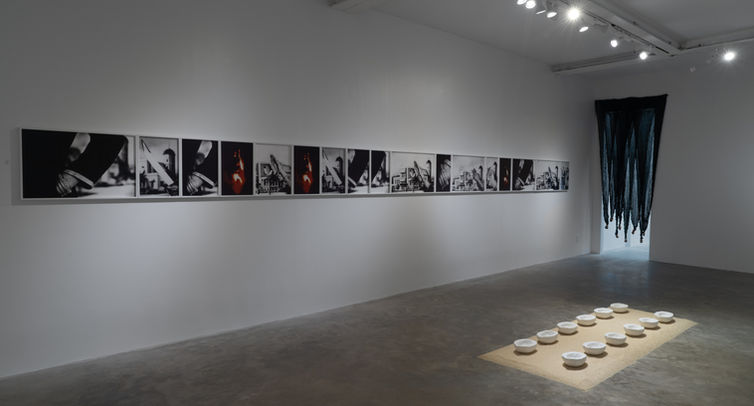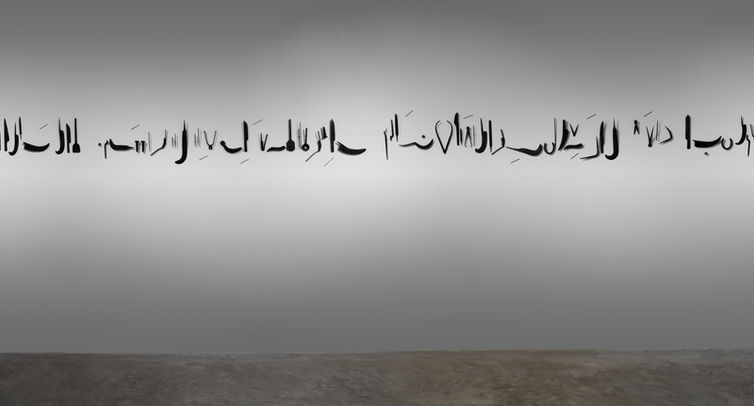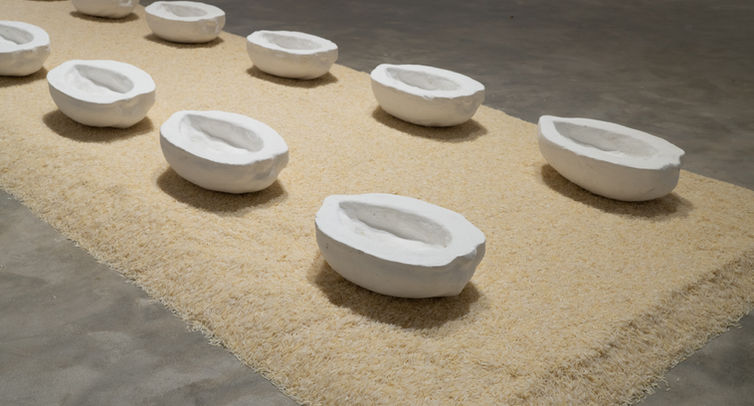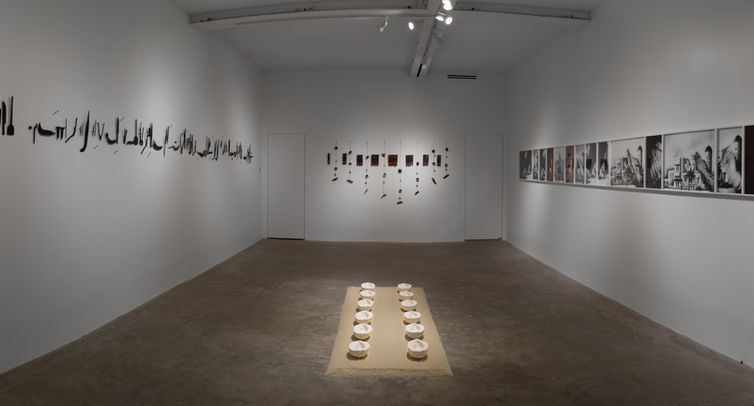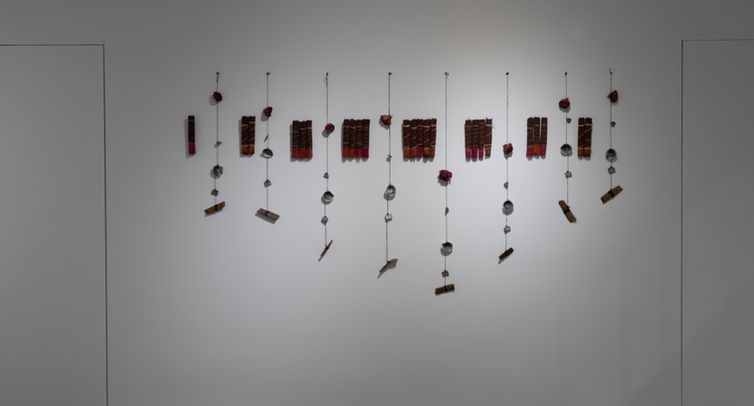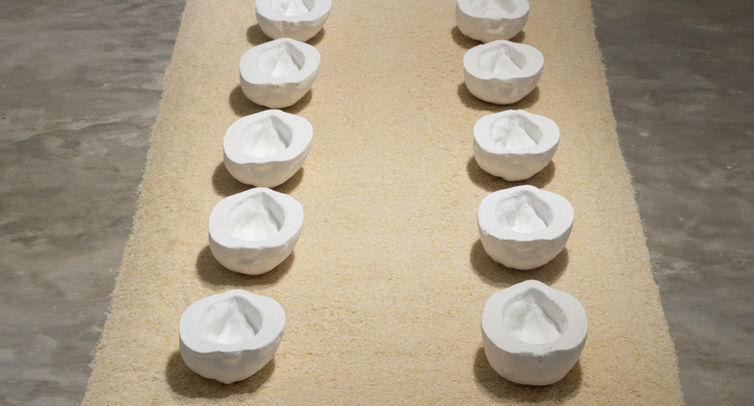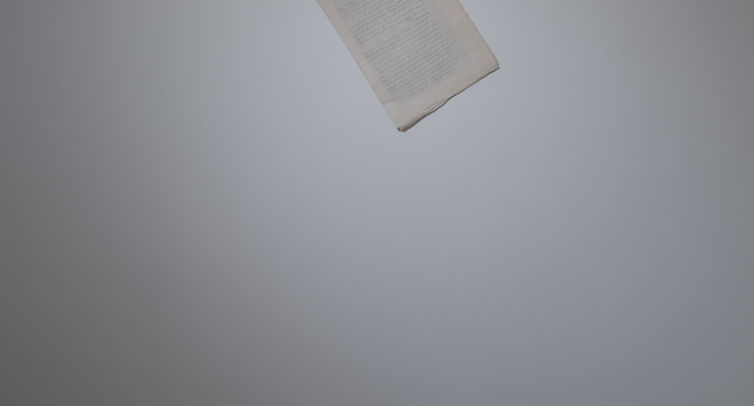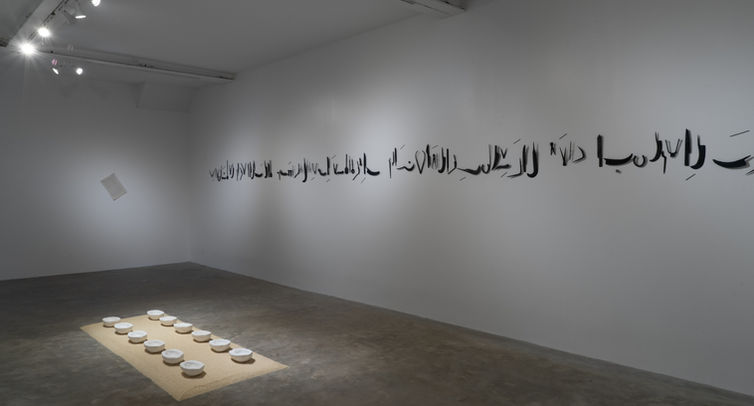Rummana Hussain - The Tomb of Begum Hazrat Mahal
November 4 2022 - April 2023
The inaugural exhibition at the IAIA’s new location, Exhibition 4 marks Indian artist Rummana Hussain’s first institutional solo presentation in the US with The Tomb of Begum Hazrat Mahal (1997), an expansive installation based work that in the artist’s true fashion, transposes identity through bodily and symbolic gestures. Tracing history, myth, and her own roots, Hussain claims Begum Hazrat Mahal, the wife of Wajid Ali Shah, as her protagonist. When her husband, the last ruler of Oudh, was ripped from power by the British and exiled to Calcutta, the Begum led an armed revolt in 1857 until ultimately defeated and driven out of Lucknow. The gallery transmutates into the walls of her tomb, a place where fragments of memory and myth collide; where Hussain provokes the female subject from a budding insurgent to an unapologetic feminist. Hussain’s world becomes less a mimetic excavation and more an altar where material fragments contend with female courage via the sacred; in Indian art critic Geeta Kapur’s words, a memory that is emphatically historical itself.
While Hussains’s legacy as a performance artist is beholden to offering her own body as a means of waiving her liberal Indian identity for the femininst cause, The Tomb of Begum Hazrat Mahal invites viewers to forge relationships with Hussain, history and testimony concurrently at various scales. The compounding effect of her various identities in India’s socio-political climate compelled Hussain to uphold her muslim identity while defending the secular, a dance that continually plays out in her work. While a series of black and white photographs of Hussain’s limbs embody the brazen gestures of the Begum to become a new living archive, rusty iron tools inscribe the facing wall with Arab- like calligraphy: a fabulated votive prayer that consciously and dialectically invokes religion. Alongside “Taveez” or lockets, dead roses and diyas tied with string, and black curtains, Hussain’s most archetypal object, the papaya halves, commands the center as an offering. An explicit visual gesture to fertility and femininity, these plaster casted, virgin-white papayas lay in rows upon uncooked rice, calling to their presence in her photographs where they appear interspersed as inflamed pyres. Amid such charged objects, we are left to wonder equally about the Begum and Rummana: whose subjectivity becomes anachronistic and whose refuses defeat.
Born in Bangalore, India, Rummana Hussain (1952-1999) began on the art scene in the 1980s largely with painting until ultimately turning to installations, sculptures, and performance work to wrestle the many incongruities and privileges of her identity. Muslim in a predominantly Hindu country, Hussain’s quest to use her body as a discursive site for the larger body politic came amidst the 1992 destruction of a sixteenth-century mosque, the Babri Masjid, by right-wing Hindu militants and the communal riots that followed in Mumbai, where she lived at the time. Even while giving up her body, and ultimately identity, to signal questions of secularism, gender, and privilege, Hussain maintained a belief that she was still not the ‘other’ in India, and rather was a steward to the discourse and meaning of belonging: a forever destabilized subject. As one of the country’s first performance artists, her legacy lives on in her ability to implicate the personal and universal simultaneously.


